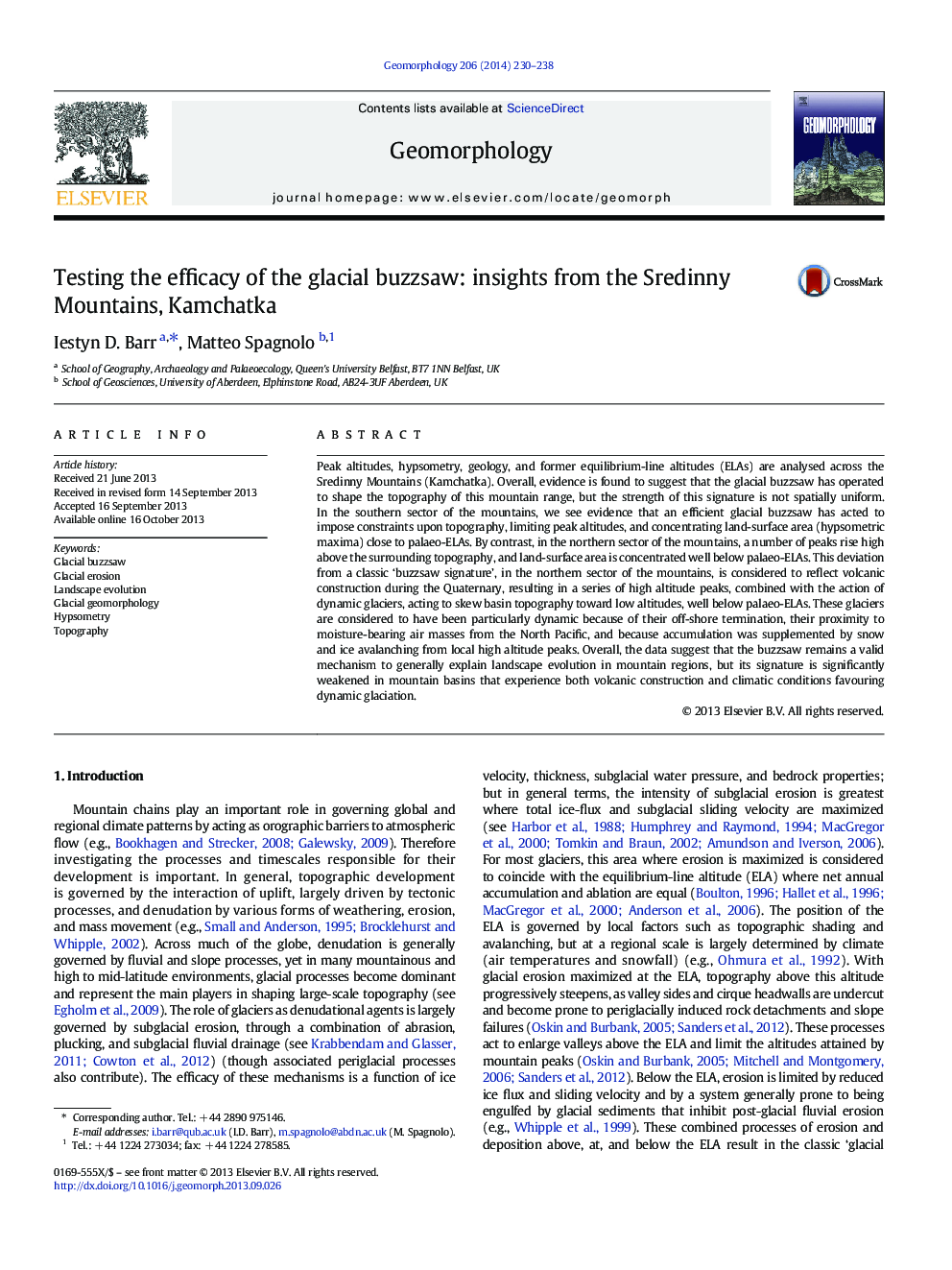| کد مقاله | کد نشریه | سال انتشار | مقاله انگلیسی | نسخه تمام متن |
|---|---|---|---|---|
| 4684658 | 1635443 | 2014 | 9 صفحه PDF | دانلود رایگان |

Peak altitudes, hypsometry, geology, and former equilibrium-line altitudes (ELAs) are analysed across the Sredinny Mountains (Kamchatka). Overall, evidence is found to suggest that the glacial buzzsaw has operated to shape the topography of this mountain range, but the strength of this signature is not spatially uniform. In the southern sector of the mountains, we see evidence that an efficient glacial buzzsaw has acted to impose constraints upon topography, limiting peak altitudes, and concentrating land-surface area (hypsometric maxima) close to palaeo-ELAs. By contrast, in the northern sector of the mountains, a number of peaks rise high above the surrounding topography, and land-surface area is concentrated well below palaeo-ELAs. This deviation from a classic ‘buzzsaw signature’, in the northern sector of the mountains, is considered to reflect volcanic construction during the Quaternary, resulting in a series of high altitude peaks, combined with the action of dynamic glaciers, acting to skew basin topography toward low altitudes, well below palaeo-ELAs. These glaciers are considered to have been particularly dynamic because of their off-shore termination, their proximity to moisture-bearing air masses from the North Pacific, and because accumulation was supplemented by snow and ice avalanching from local high altitude peaks. Overall, the data suggest that the buzzsaw remains a valid mechanism to generally explain landscape evolution in mountain regions, but its signature is significantly weakened in mountain basins that experience both volcanic construction and climatic conditions favouring dynamic glaciation.
Journal: Geomorphology - Volume 206, 1 February 2014, Pages 230–238